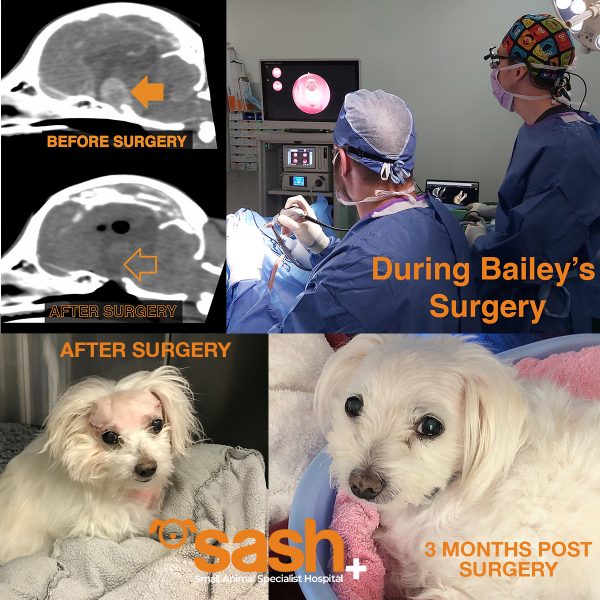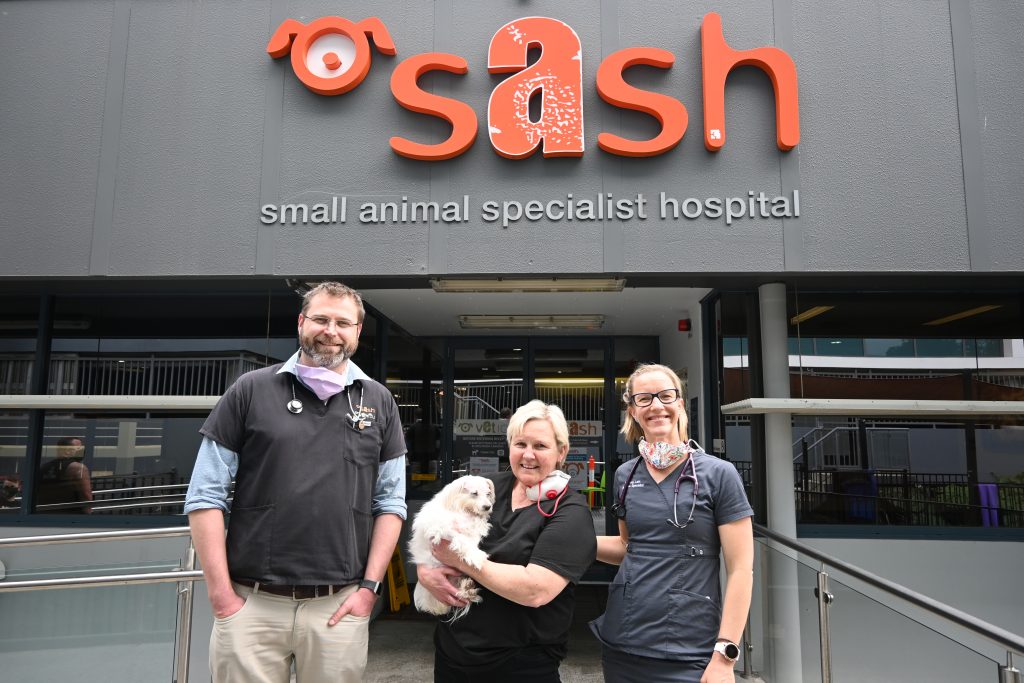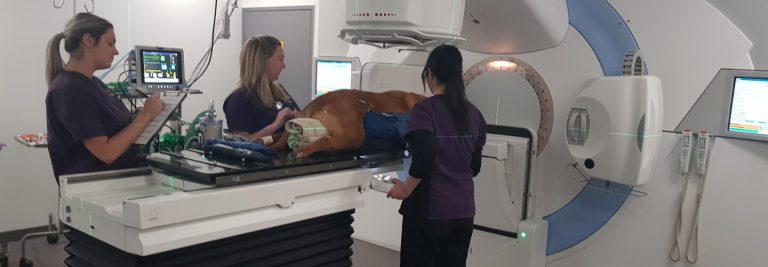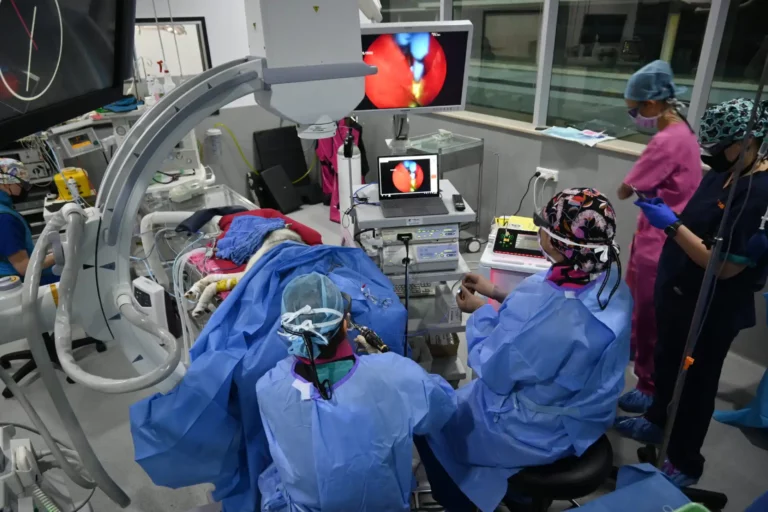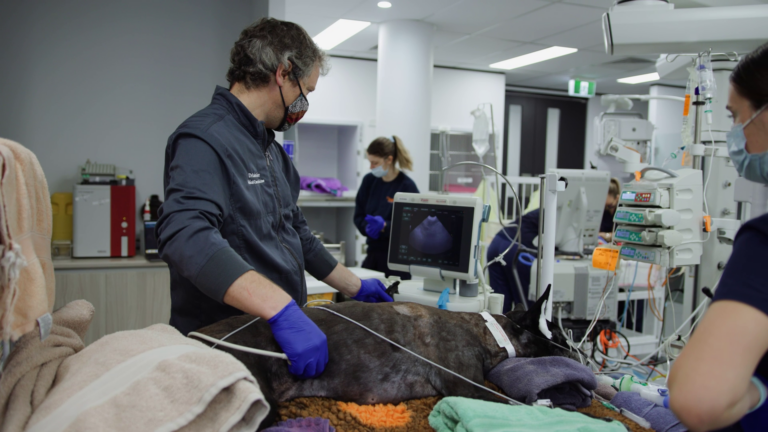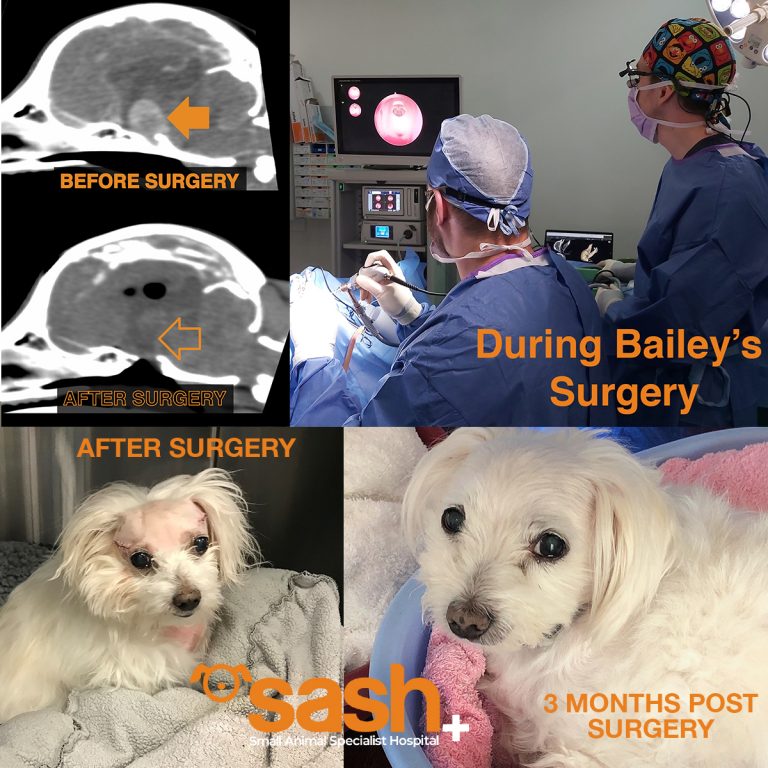Did you know Cushing’s disease (also known as Hyperadrenocorticism) is the most common hormonal problem in Australian dogs?
Excessive levels of the hormone cortisol are produced, leading to increased hunger and thirst, weight gain and hair loss among other signs. It is most commonly by caused by a tumour of the pituitary gland at the base of the brain. In many dogs this tumour may grow large enough to press on the brain and cause neurological problems such as dullness and imbalance.
Bailey’s owner Diane already knew a lot about Cushing’s in dogs from previous experience. When Bailey himself was diagnosed and started showing signs of lethargy she knew something was seriously wrong with the help of her GP Vet Dr Lisa Henshaw at Camden Valley Animal Hospital immediately sought out the help of Dr. Patrick Kenny and Dr. Amy Lam at SASH.
Bailey was diagnosed with a large pituitary tumour on an MRI scan. The medications used to treat the hormone excess could do nothing to alleviate the effects of the tumour. The most ideal treatment for pituitary tumours causing Cushing’s syndrome is surgical removal, which until now has not been an option available to pets and their owners in Australia.
Did you know? Our neurosurgeon Dr. Patrick Kenny co-founded the pituitary surgery program at the Royal Veterinary College in London, performing over fifty of these operations in his time there. Luckily for Dianne and Bailey, he has brought his expertise to SASH. Bailey successfully underwent a transsphenoidal hypophysectomy on in August 2020.
Bailey needed a great deal of care before, during and after the surgery to keep him stable – the pituitary gland normally produces many of the hormones required to maintain life. Removing the pituitary gland required that these hormones were carefully managed and supplemented. This is where Dr. Amy Lam, our internal medicine specialist took over Bailey’s care and led our team of intensive care veterinarians and nurses to such a successful outcome for Bailey.
“Today, Patrick and I had the pleasure of discharging Bailey. Bailey’s mum fought back many tears. She is eternally thankful that her boy is alive and well. This is the first time this procedure has been successfully performed in the Southern Hemisphere and to say that we are proud of our achievement is an absolute understatement.”
– Dr. Amy Lam
“I am immensely proud of our team here at SASH. Pituitary surgery is truly a team effort and I am excited to be opening the SASH Pituitary Centre – a multidisciplinary unit of SASH Specialists from the fields of Neurosurgery, Internal Medicine/Endocrinology, Anaesthesia, Critical Care, Radiotherapy and Diagnostic Imaging. Together we can offer the best available in diagnosis and treatment of various pituitary conditions, including a chance to cure Cushing’s disease in dogs like Bailey.”
– Dr. Patrick Kenny
